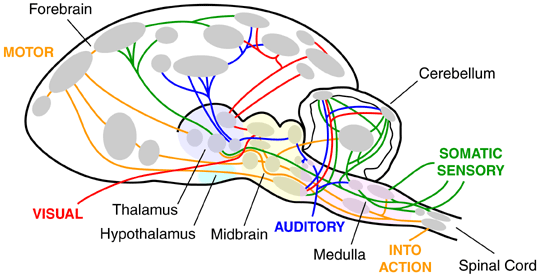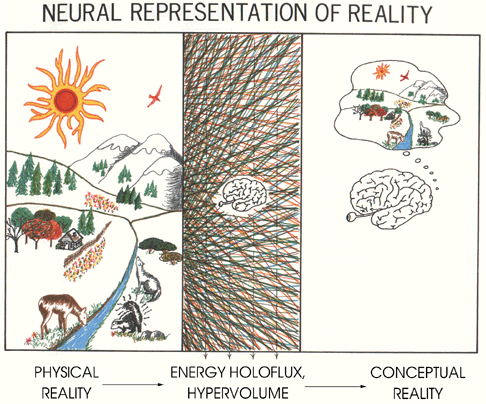


|
This
diagram illustrates the principle that brain circuits travel up
and down the neuroaxis, from one side of the brain to the other,
as well as back and forth between many different brain components
at several levels within the forebrain, thalamus, hypothalamus,
midbrain, medulla, cerebellum and spinal cord.
|
|
Why is it important to learn how brains are constructed? For a brain to perform all the functions that it must do, it must: 1. Detect and locate the great variety of stimulus types, sources, and happenings in the environment; 2. Make sense of all these sensory events; 3. Respond to all these features by expressing an elaborate behavioral repertoire; and 4. Make judgments, learn, and think about all these things.
Over
the last 50 years, a great number of neuronal cell groups, circuits
and connections have been identified and named in the several
different regions of the brain. In addition, the functions of
these different nuclei and circuits have been identified. Moreover,
the neuroanatomical and neurochemical mechanisms by which these
circuits operated to produce and enable them to function effectively
have begun to be clarified. But much remains to be done, and
in the next two decades, it is estimated that modern technology
will provide ever greater insight as to how the circuits of
the brain perform the functions that they do. However,
a major part of learning about the architecture of the brain
and its parts involves becoming familiar with the names of the
different structures. Telencephalon (Forebrain):
Diencephalon:
Mesencephalon (Midbrain):
Metencephalon (Hindbrain):
Myelencephalon
(Brainstem, medulla): |
List of Specimens | Explore Collections | Brain Sections | Brain Evolution | Brain Development | Brain Circuitry | Brain Functions | Location and Use | Related Web Sites | Contact Us | Search MSU Database | Personnel | Home
